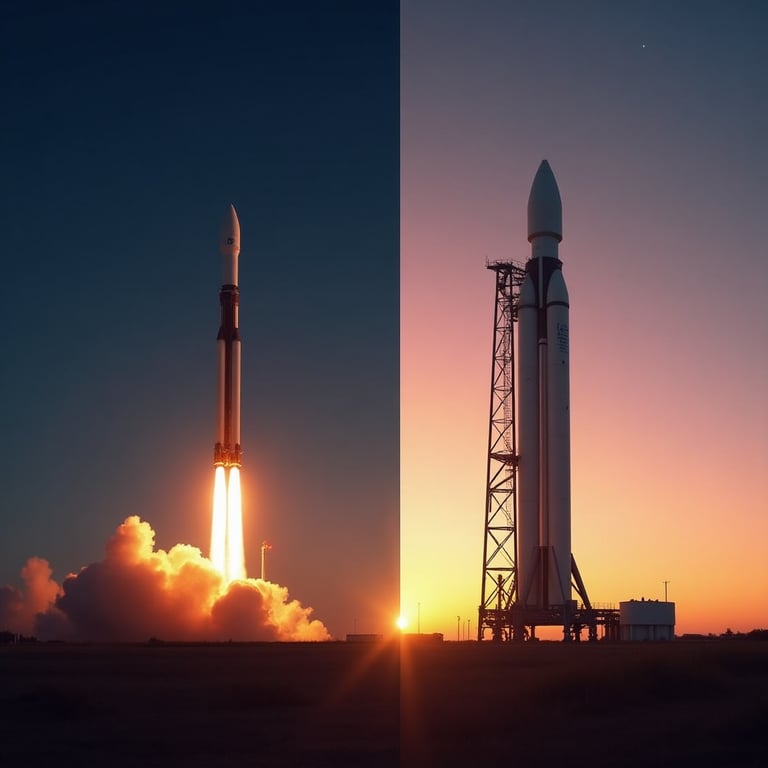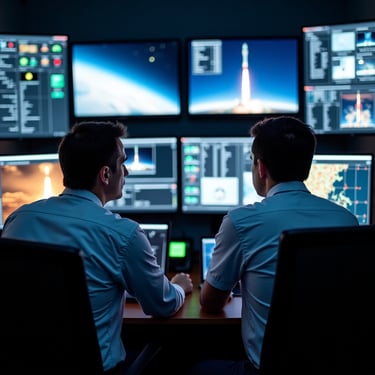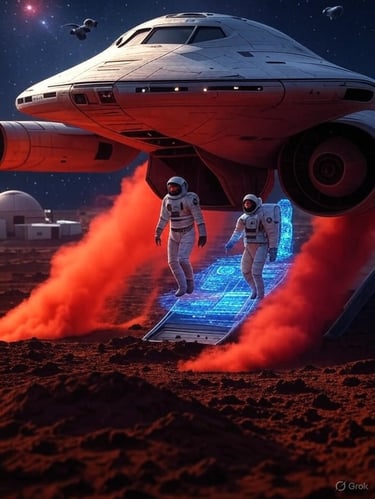Behind the Scenes of a SpaceX Launch: How Falcon 9 & Starship Work
SpaceX has revolutionized space travel with its groundbreaking rockets, Falcon 9 and Starship. These engineering marvels represent the past, present, and future of space exploration, combining cutting-edge technology with ambitious concepts for interplanetary travel. This deep dive explores every phase of a SpaceX launch, from initial preparations to post-mission recovery, comparing these two iconic rockets and their role in shaping the future of human space travel


The Pre-Launch Phase: Meticulous Preparation
Every SpaceX mission begins months before launch with mission planning and payload integration. Engineers determine flight speeds, fuel requirements, and payload configurations based on the mission’s objectives—whether to deploy Starlink satellites, resupply the International Space Station (ISS), or test Starship’s capabilities. Payloads are carefully secured inside the rocket’s fairing (Falcon 9) or cargo bay (Starship) to withstand extreme forces during ascent.
Rocket assembly and transport are feats of logistics and precision. The Falcon 9 is manufactured in Hawthorne, California, before being transported to launch sites in Florida or California. Its nine Merlin engines undergo rigorous testing before integration. Meanwhile, Starship—built in Boca Chica, Texas—features a stainless steel body and Raptor engines, which are more powerful and efficient than the Falcon 9’s Merlins. Due to its large size (120 meters long compared to the Falcon 9's 70 meters), Starship requires vertical integration at the launch site.
Before lift-off, SpaceX conducts a static fire test, igniting the engines while the rocket remains anchored to verify that all systems are functioning properly.
Final checks include:
Fueling (Falcon 9 uses supercooled liquid oxygen and kerosene; Starship uses methane for Mars compatibility).
Weather assessment (high winds or lightning can scrub a launch).
Range safety clearance (ensuring no aircraft or ships are in the hazard zone).


Launch Day: The Countdown to Lift-off
The final hours before launch are a carefully orchestrated sequence of events. For crewed missions, astronauts board the spacecraft via the crew access arm, while mission control monitors thousands of data points. The countdown includes key milestones:
T-1 hour: Final systems checks and crew hatch sealing (if applicable).
T-3 minutes: Engine cooldown begins to prevent thermal shock.
T-0: The moment of ignition, where the engines roar to life, producing millions of pounds of thrust.
The Falcon 9’s nine Merlin engines produce 1.7 million pounds of thrust, lifting the 550-ton rocket off the pad. Starship’s super heavy booster, with 33 Raptor engines, produces an astonishing 17 million pounds of thrust, more than double the power of NASA’s Saturn V.
As a rocket climbs, it encounters Max-Q (maximum aerodynamic pressure), the point where the atmospheric stresses are greatest. Engineers design structures to withstand these forces while maintaining stability.
Stage Separation & Reusability: SpaceX’s Game-Changing Innovation
Traditional rockets discard their first stages, but SpaceX’s reusability sets it apart.
Falcon 9’s first stage separates at ~80 km altitude, then performs a series of manoeuvres to return to Earth:
Boostback burn: Adjusts trajectory toward the landing site.
Re-entry burn: Slows descent through the atmosphere.
Landing burn: Final engine ignition for a soft touchdown on a drone ship or landing pad.
Starship’s recovery is even more ambitious:
Super Heavy booster will be caught mid-air by mechanical arms on the launch tower.
Starship itself will re-enter Earth’s atmosphere using a "belly flop" maneuver before landing vertically.
Falcon 9 vs. Starship: Comparing Two Generations of Rockets


Feature Falcon 9 Starship
Height70m (230 ft) 120m (394 ft)
Payload Capacity 22,800 kg (LEO) 100,000+ kg (LEO)
Engines 9 Merlin 33 Raptor (Super Heavy) +
6 Raptor (Starship)
Reusability First stage & fairings Fully reusable
Primary Missions Satellites, ISS resupply Moon, Mars, deep space
Source: SpaceX
The Falcon 9 is SpaceX’s workhorse, with more than 300 successful launches (as of 2024). It has made reusable rockets the norm, greatly reducing launch costs.
Starship, still in testing, represents the future of space travel. Its stainless steel construction, in-orbit refueling capability, and massive payload capacity make it ideal for lunar bases, Mars colonization, and beyond.
Post-Launch: Recovery & Refurbishment
After landing, Falcon 9 boosters are inspected, refurbished, and reused in as little as 30 days. Some have flown 15+ missions, proving reusability’s viability.
Starship’s rapid reuse is still in development, but SpaceX aims for 24-hour turnaround times making spaceflight as routine as air travel.
The Future of SpaceX Launches
SpaceX’s innovations are paving the way for:
Lunar missions (NASA’s Artemis program will use Starship for Moon landings).
Mars colonization (Elon Musk envisions a self-sustaining city by 2050).
Space tourism (Private lunar flights are already booked).
Conclusion:
From mission planning to Mars ambitions, SpaceX’s launches showcase humanity’s potential in space. Falcon 9 has already changed the game, while Starship promises an interplanetary future. The next time you watch a SpaceX launch, remember: it’s not just a rocket—it’s a step toward becoming a multiplanetary species.
Which SpaceX innovation excites you most? Share your thoughts in the comments!
